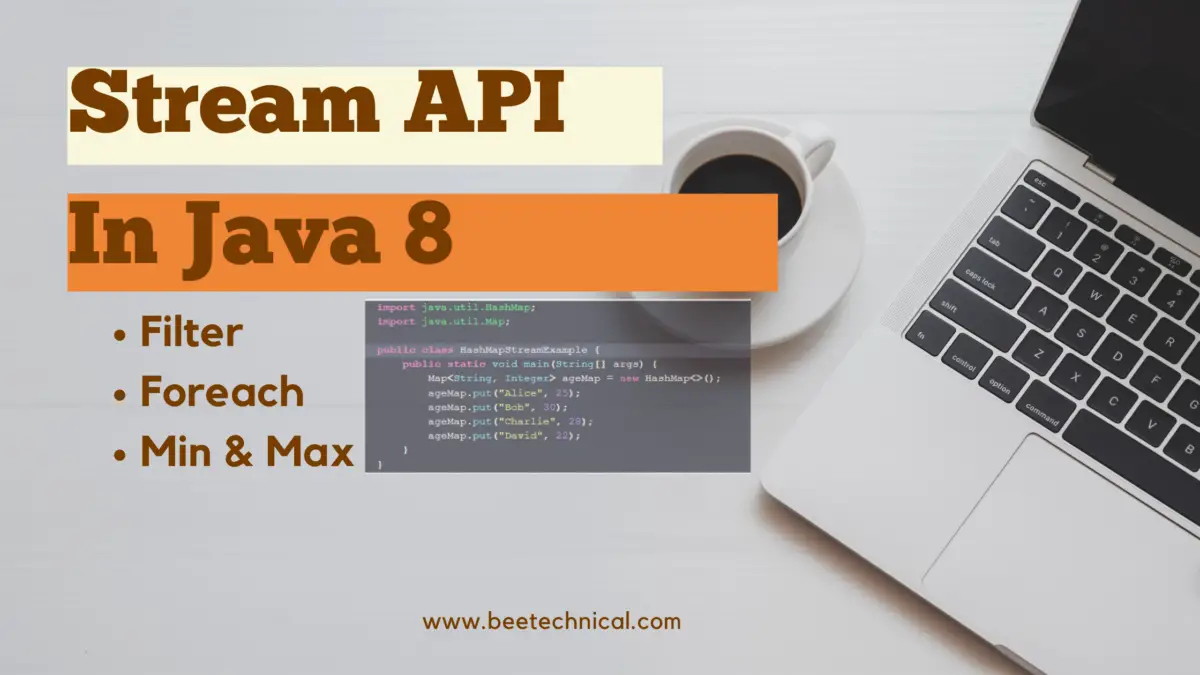Looking for JSP interview questions? Here’s a selection of commonly asked JSP interview questions that can help you prepare for your upcoming interview.
JSP (JavaServer Pages) is a technology used for creating dynamic web pages in Java. These interview questions cover various aspects of JSP, including its features, lifecycle, directives, actions, and integration with other technologies like Servlets and JavaBeans.
By familiarizing yourself with these questions, you’ll be better equipped to demonstrate your knowledge and expertise in JSP during your interview.
1. What is JSP?
JSP stands for JavaServer Pages. It is a technology used for developing dynamic web pages in Java. JSP allows you to mix HTML code and Java code to create web pages that can generate dynamic content. JSP pages are compiled into Java servlets by the web container at runtime and executed on the server side.
2. How does JSP differ from Servlets?
JSP and Servlets are both Java technologies used for developing web applications, but they differ in their approach and usage:
- Presentation Logic: JSP focuses on separating the presentation logic (HTML) from the business logic (Java code). JSP allows embedding Java code within HTML using scripting elements, making it easier to generate dynamic content. Servlets, on the other hand, are Java classes that handle the entire request-processing cycle. While servlets can generate HTML dynamically, they require explicitly writing HTML code within the Java code.
- Development Ease: JSP provides a more simplified and intuitive approach to web development, especially for designers and front-end developers who are familiar with HTML. JSP allows the mixing of HTML and Java code, which can make it easier to maintain and understand the code. Servlets require writing Java code explicitly, which may require more programming expertise.
- View-oriented vs. Controller-oriented: JSP is primarily view-oriented, focusing on the presentation layer of the web application. It is used for generating dynamic content and displaying data to the users. Servlets, on the other hand, are controller-oriented and handle the logic behind processing requests, managing sessions, handling form data, and interacting with databases.
- Code Reusability: Servlets offer greater code reusability as they can be invoked by multiple JSP pages or other servlets. Common functionality can be encapsulated within servlets and shared across different web components. JSP pages can include or forward to servlets for handling complex business logic or processing requests.
- Maintenance and Separation of Concerns: JSP promotes a clear separation of concerns by separating the presentation logic from the business logic. This separation makes it easier to maintain and update the codebase, as changes to the presentation layer can be made in the JSP files without affecting the underlying Java code in the servlets.
In summary, JSP and Servlets have different focuses and approaches. JSP is more suitable for view-oriented tasks, providing a simplified way to generate dynamic content by mixing HTML and Java code. Servlets are controller-oriented and handle the request-processing cycle, offering greater flexibility and code reusability. Both technologies are often used together to build robust web applications.
3. Explain the life cycle of a JSP
The life cycle of a JSP (JavaServer Pages) involves several phases as follows:
- JSP Compilation: When a JSP is accessed for the first time or when changes are made to the JSP file, the JSP container compiles the JSP into a servlet. This compilation step translates the JSP code into Java servlet code. The resulting servlet is then loaded and executed by the container.
- Initialization: During initialization, the container instantiates an instance of the compiled servlet (generated from the JSP) and initializes any resources required by the JSP. This typically includes initializing variables, establishing database connections, or loading configuration settings.
- Request Handling: When a client requests a JSP page, the container invokes the
service()method of the servlet associated with the JSP. Theservice()method handles the request and generates the response. The container provides implicit objects, such asrequest,response,session, andapplication, that can be accessed within the JSP for processing the request and generating dynamic content. - JSP Execution: The JSP execution phase involves processing the JSP code and generating the response. The JSP container translates the JSP directives, scripting elements, and custom tags into equivalent Java code. The Java code is then executed, and the output is sent back to the client as an HTML response.
- Destruction: When the JSP is no longer needed, such as when the web application is undeployed or the server is shut down, the container calls the
destroy()method of the JSP servlet. This provides an opportunity to release any resources held by the JSP, such as closing database connections or freeing memory.
It’s important to note that the JSP life cycle is managed by the JSP container (e.g., Tomcat, Jetty) provided by the web server or servlet container. Understanding the life cycle of a JSP helps in optimizing resource usage, managing initialization and cleanup tasks, and writing efficient JSP code.
4. What are the different types of directives in JSP?
In JSP (JavaServer Pages), directives are special instructions that provide guidance to the JSP container on how to process the JSP page. There are three main types of directives:
- Page Directive: The page directive provides instructions specific to the entire JSP page. It is placed at the top of the JSP file and is enclosed within
<%@ %>tags. Some common attributes of the page directive include:import: Specifies Java classes or packages to be imported.contentType: Sets the MIME type and character encoding for the response.session: Specifies if the JSP page requires session tracking.errorPage: Specifies a custom error page to handle exceptions.isELIgnored: Controls the evaluation of Expression Language (EL) expressions.buffer: Sets the buffer size for the JSP page output.
<%@ page import="java.util.List" contentType="text/html; charset=UTF-8" session="true" %> - Taglib Directive: The taglib directive is used to define and declare custom tag libraries to be used on the JSP page. Tag libraries provide a way to encapsulate and reuse complex functionality or custom actions in JSP. The taglib directive specifies the location of the tag library descriptor (TLD) file and maps the custom tags to their respective URIs (Uniform Resource Identifiers).Syntax:
<%@ taglib uri="URI" prefix="prefix" %>Example:<%@ taglib uri="http://www.example.com/customtags" prefix="ct" %>
Directives in JSP play a crucial role in defining page-level settings, including import statements, error handling, the inclusion of external files, and the utilization of custom tag libraries. They provide control and flexibility in structuring and configuring JSP pages.
5. What are JSP actions?
In JSP (JavaServer Pages), actions are XML-like elements that are used to perform specific tasks or actions within a JSP page. Actions are enclosed within <jsp:...> tags and are processed by the JSP container at runtime. They provide additional functionality and help in structuring and controlling the behavior of JSP pages. Here are some commonly used JSP actions:
<jsp:include>: This action is used to dynamically include the content of another resource, such as a JSP page or a static HTML file, into the current JSP page. It allows for modularizing and reusing code across multiple pages.Syntax:<jsp:include page="filename.jsp" /><jsp:forward>: This action is used to forward the control from one JSP page to another resource, such as another JSP page, a servlet, or a static HTML file. It is often used for centralized request handling and navigation.Syntax:<jsp:forward page="filename.jsp" /><jsp:param>: This action is used to pass parameters or values to another resource, such as a JSP page or a servlet, during an include or forward action. It allows for passing data between different components.Syntax:<jsp:param name="parameterName" value="parameterValue" /><jsp:useBean>: This action is used to instantiate and manage JavaBeans (POJOs) within a JSP page. It allows for creating and accessing Java objects that can encapsulate data and perform operations.Syntax:<jsp:useBean id="beanId" class="com.example.BeanClass" /><jsp:setProperty>and<jsp:getProperty>: These actions are used to set and get property values of a JavaBean respectively. They are often used in conjunction with<jsp:useBean>to manipulate bean properties.Syntax:<jsp:setProperty name="beanId" property="propertyName" value="propertyValue" />Syntax:<jsp:getProperty name="beanId" property="propertyName" /><jsp:scriptlet>: This action allows for embedding Java code directly within the JSP page. It is used to execute arbitrary Java code snippets and perform complex logic or computations.Syntax:<jsp:scriptlet>Java code</jsp:scriptlet>
JSP actions provide additional functionality and flexibility within JSP pages, allowing for dynamic inclusion, parameter passing, navigation, bean management, and executing Java code. They enhance the power and versatility of JSP for building dynamic web applications.
6. What is the purpose of JSP scripting elements?
JSP (JavaServer Pages) scripting elements allow you to embed Java code within the HTML content of a JSP page. These scripting elements provide a way to execute dynamic logic, manipulate data, and generate dynamic content based on Java code. There are three types of JSP scripting elements:
Scriptlet (<% ... %>) – Scriptlets allow you to include Java code directly within the JSP page. You can write any valid Java code within the scriptlet tags, and it will be executed when the JSP page is processed. Scriptlets are commonly used for computations, conditionals, loops, and other programming logic.
<% String name = "John"; int age = 30; %> <h2>Welcome, <%= name %></h2> <p>Your age is <%= age %></p>
Declaration (<%! ... %>) – Declarations are used to declare variables, methods, and other members within the JSP page. Declarations are typically placed outside the HTML content of the page and can be accessed by other scripting elements or expressions within the JSP. Declarations are useful for defining reusable variables and methods.
<%!
private int calculateSum(int num1, int num2) {
return num1 + num2;
}
%>
<p>The sum of 5 and 3 is <%= calculateSum(5, 3) %></p>
Expression (<%= ... %>) – Expressions are used to output the result of a Java expression directly within the HTML content of the JSP page. The expression is evaluated and its value is inserted into the output stream. Expressions are commonly used to display dynamic data or computed values.
<% int quantity = 10; double price = 5.99; %> <p>Total cost: $<%= quantity * price %></p>
Scripting elements in JSP provide the ability to combine Java code with HTML content, enabling dynamic behavior and customization within the web pages. However, it’s important to maintain a clear separation between presentation and business logic to ensure the maintainability and readability of the code.
7. How do you include a file in JSP?
In JSP (JavaServer Pages), you can include the content of an external file within a JSP page using two different approaches: using the <%@ include %> directive or the <jsp:include> action. Here’s how each method works:
Using the <%@ include %> directive: The <%@ include %> directive is a static directive that includes the content of another file during the translation phase of the JSP. The content of the included file becomes part of the JSP page before it is compiled. The syntax for including a file using this directive is as follows:
<%@ include file="filename.jsp" %>
<html>
<head>
<title>My JSP Page</title>
</head>
<body>
<%@ include file="header.jsp" %>
<h1>Content of the JSP page</h1>
<%@ include file="footer.jsp" %>
</body>
</html>
In the above example, the content of “header.jsp” and “footer.jsp” will be included in the resulting HTML output of the JSP page.
Using the <jsp:include> action: The <jsp:include> action is a dynamic action that includes the content of another file during the request processing phase of the JSP. The included file is processed separately, and its output is inserted into the output stream of the JSP page. The syntax for including a file using this action is as follows:
<jsp:include page="filename.jsp" />
<html>
<head>
<title>My JSP Page</title>
</head>
<body>
<jsp:include page="header.jsp" />
<h1>Content of the JSP page</h1>
<jsp:include page="footer.jsp" />
</body>
</html>
In this example, the content of “header.jsp” and “footer.jsp” will be dynamically included in the resulting HTML output when the JSP page is processed.
8. What is the difference between forward and include in JSP?
In JSP (JavaServer Pages), both forward and include are mechanisms used for incorporating content from other resources into the current JSP page. However, they differ in their functionality and how they affect the request processing. Here’s the difference between forward and include in JSP:
- Forward (
<jsp:forward>orRequestDispatcher.forward()):- Functionality: Forwarding transfers the control from the current JSP page to another resource, such as another JSP page, a servlet, or a static HTML file. The control is transferred permanently, and the new resource becomes responsible for handling the entire request.
- Request Attributes: The forward mechanism allows passing request attributes, such as parameters or data, to the forwarded resource. The attributes set in the current request scope can be accessed by the forwarded resource.
- URL Change: The URL in the browser’s address bar changes to the URL of the forwarded resource, reflecting the new resource being accessed.
- Client Perception: From the client’s perspective, a forward appears as a single request and response cycle, as if they directly accessed the forwarded resource.
<jsp:forward page="anotherPage.jsp" />
- Include (
<jsp:include>orRequestDispatcher.include()):- Functionality: Including includes the content of another resource, such as a JSP page or a static HTML file, into the current JSP page. The included content is processed and included in the response, and then the control returns to the original JSP page to continue processing.
- Request Attributes: The include mechanism does not provide a direct way to pass request attributes to the included resource. However, you can use
<jsp:param>orsetAttribute()to pass parameters or data to the included resource. - URL Change: The URL in the browser’s address bar remains the same as the original JSP page URL, as the client is still accessing the original page.
- Client Perception: From the client’s perspective, an include results in multiple request and response cycles, with the included content being merged into the final response.
<jsp:include page="includedPage.jsp" />
In summary, forward transfers the control permanently to another resource, while include includes the content of another resource into the current page and continues processing. Forwarding is useful for centralized request handling, navigation, and delegation to other resources. Including is beneficial for reusing common content or components across multiple pages. The choice between forward and include depends on the desired behavior and requirements of the application.
9. What are the implicit objects in JSP?
In JSP (JavaServer Pages), implicit objects are predefined objects that are automatically available to the JSP page without any need for explicit declaration or initialization. These objects provide access to various aspects of the JSP page’s execution environment, request, response, and session data. The implicit objects in JSP include:
out: It is an instance of theJspWriterclass and provides a way to send output to the client’s browser. It is used to write content for the response stream. Example:<% out.println("Hello, World!"); %>request: It is an instance of theHttpServletRequestclass and represents the client’s request to the JSP page. It provides access to request-related information, such as parameters, headers, cookies, and attributes. Example:<%= request.getParameter("name") %>response: It is an instance of theHttpServletResponseclass and represents the response that will be sent back to the client. It provides methods for setting response headers, and status codes and sending the response. Example:<% response.sendRedirect("anotherPage.jsp"); %>session: It is an instance of theHttpSessionclass and represents the session associated with the client’s request. It allows for storing and retrieving session-specific data across multiple requests. Example:<% session.setAttribute("username", "John"); %>application: It is an instance of theServletContextclass and represents the application’s servlet context. It provides access to application-wide information and resources shared among all servlets and JSP pages within the application. Example:<%= application.getInitParameter("appVersion") %>config: It is an instance of theServletConfigclass and represents the configuration information of the JSP page. It provides access to initialization parameters specified in the web deployment descriptor (web.xml).Example:<%= config.getInitParameter("pageTitle") %>pageContext: It is an instance of thePageContextclass and provides access to various JSP page-related objects and methods. It encapsulates all the other implicit objects and serves as the central access point. Example:<%= pageContext.getOut().println("Hello, World!") %>
These implicit objects simplify the development process by providing convenient access to commonly used functionality and data within JSP pages. They enable interaction with the request and response objects, session management, and accessing application-wide resources.
10. What is JSP expression language (EL)?
JSP Expression Language (EL) is a simplified scripting language introduced in JSP 2.0 as a replacement for scriptlets and cumbersome Java code within JSP pages. EL provides a convenient and concise way to access and manipulate data stored in JavaBeans, requests, sessions, application scopes, and other objects available in the JSP environment.
Key features and functionalities of JSP Expression Language (EL) include:
- Expression Evaluation: EL allows the evaluation of expressions within JSP pages to access and manipulate data. Expressions are enclosed within
${...}syntax.Example:${user.name} - Accessing Variables and Attributes: EL provides a simplified syntax to access variables, request attributes, session attributes, and application attributes. Example:
${variableName},${requestScope.attributeName},${sessionScope.attributeName},${applicationScope.attributeName} - Accessing JavaBean Properties: EL can directly access the properties of JavaBeans without the need for explicit Java code. It simplifies the process of retrieving and setting values in JavaBeans.Example:
${user.name},${user.age} - Operators and Functions: EL supports various operators, such as arithmetic, logical, and comparison operators, allowing for complex expressions. It also provides built-in functions for common operations. Example:
${quantity * price},${empty userList},${fn:toUpperCase(name)} - Collection and Array Access: EL provides a concise way to iterate over collections and arrays and access their elements.Example:
${userList.size()},${userList[0]} - Conditional Expressions: EL supports conditional expressions for the conditional evaluation of values or expressions.Example:
${user.isAdmin ? 'Admin' : 'User'}
By using JSP Expression Language (EL), developers can write cleaner and more concise code within JSP pages. EL promotes separation of concerns by keeping presentation logic separate from the actual Java code, making the code more readable and maintainable. It simplifies the access and manipulation of data, reduces the need for scriptlets, and enhances the overall productivity of JSP development.
11.What are the advantages and disadvantages of JSP?
Advantages of JSP (JavaServer Pages):
- Easy Integration: JSP seamlessly integrates with Java code and other Java technologies, such as Servlets and JavaBeans, allowing developers to leverage existing Java knowledge and libraries.
- Simplified Web Development: JSP provides a simplified approach to web development by combining HTML markup and dynamic server-side logic in a single file. This allows developers to create dynamic web pages without the need for extensive JavaScript or complex client-side frameworks.
- Reusability: JSP promotes code reusability by allowing the use of custom tags, JavaBeans, and tag libraries. These reusable components can be shared across multiple JSP pages, improving productivity and maintainability.
- Separation of Concerns: JSP supports the separation of concerns by providing a clear separation between presentation logic (HTML markup) and application logic (Java code). This separation enhances code maintainability and readability.
- Rich Standard Library: JSP comes with a rich standard tag library (JSTL) and expression language (EL) that provide a wide range of functionalities for accessing data, looping, conditional statements, and formatting. This reduces the need for custom code and enhances productivity.
- Platform Independence: JSP pages are compiled into servlets, which can be executed on any Java-enabled server. This platform independence allows JSP applications to run on different operating systems and server environments.
Disadvantages of JSP:
- Mixing Presentation and Logic: While JSP allows for the separation of concerns, it’s still possible for developers to mix presentation and business logic within the JSP pages. This can lead to code that is difficult to maintain and debug.
- Steep Learning Curve: JSP requires developers to have a solid understanding of Java and web development concepts. Learning JSP and related technologies, such as servlets and tag libraries, may require a significant learning curve for developers who are new to Java web development.
- Limited Design Flexibility: JSP pages are primarily focused on generating dynamic content, and their design capabilities are limited compared to modern client-side frameworks. Creating complex and visually rich user interfaces may require additional front-end technologies.
- Performance Overhead: JSP pages need to be compiled into servlets before they can be executed, which adds an overhead during the initial request. Additionally, improper use of scripting elements or excessive server-side processing within JSP pages can impact performance.
- Testing Challenges: Testing JSP pages can be challenging as they contain a mix of HTML markup and server-side code. Proper testing practices, such as unit testing and integration testing, may require additional tools and frameworks.
- Maintenance Complexity: If not properly organized, JSP pages can become difficult to maintain, especially in large-scale applications. Careful consideration of code organization, separation of concerns, and adherence to best practices is essential to ensure maintainability.
Overall, while JSP offers many advantages for web development, it’s important to be mindful of its limitations and consider factors such as code organization, maintainability, and performance when using JSP in projects.
12. What is the role of a JSP container?
In the context of JSP (JavaServer Pages), a JSP container, also known as a JSP engine or servlet container, plays a crucial role in the execution and management of JSP pages. The primary responsibilities of a JSP container include:
- JSP Compilation: When a JSP page is accessed for the first time, the JSP container translates the JSP code into a servlet. It performs the compilation process, converting the JSP markup and scripting elements into Java code.
- Servlet Lifecycle Management: The JSP container manages the lifecycle of the generated servlets. It initializes the servlet by invoking its
init()method and handles subsequent requests by calling theservice()method. The container ensures that the servlet instances are properly created, reused, and destroyed. - Request Handling: When a client requests a JSP page, the JSP container receives the request and passes it to the corresponding servlet generated from the JSP. It provides the necessary environment and context for the servlet to process the request, including access to request parameters, headers, session data, and other servlet-related functionality.
- JSP Execution: The JSP container executes the generated servlet, which includes the evaluation of JSP expressions, execution of Java code embedded within the JSP, and rendering the output HTML or other content to be sent back to the client.
- Implicit Object Management: The JSP container provides the implicit objects (e.g.,
request,response,session,application) that are available within JSP pages. It manages the creation, population, and accessibility of these objects, allowing developers to access and manipulate request, session, and application data easily. - Error Handling: The JSP container handles errors and exceptions that may occur during the execution of a JSP page. It ensures appropriate error handling mechanisms are in place, such as redirecting to an error page or displaying error information to the user.
- Performance Optimization: The JSP container is responsible for optimizing the performance of JSP execution. It may implement caching mechanisms to store compiled servlets, precompile JSP pages for faster response times, and apply other optimizations to enhance the overall performance of the application.
- Security Management: The JSP container enforces security measures defined in the web deployment descriptor (web.xml) or other configuration files. It ensures that access to JSP pages, resources, and sensitive data is controlled according to the specified security constraints.
- Integration with Servlet API: As JSP is built on top of the Servlet API, the JSP container seamlessly integrates with the Servlet API and provides support for servlet-specific features and functionality. This includes handling servlet context, managing request and session objects, and interacting with other servlets and filters.
Overall, the JSP container acts as the runtime environment for JSP pages, managing their execution, lifecycle, and integration with the underlying servlet infrastructure. It abstracts away many low-level details, allowing developers to focus on writing dynamic web applications using JSP technology.
13. What is the ‘page’ directive in JSP?
The ‘page’ directive in JSP (JavaServer Pages) is used to provide instructions and configuration settings specific to the current JSP page. It is placed at the top of the JSP file and begins with the <%@ page %> tag. The ‘page’ directive allows you to define various attributes and settings for the JSP page.
Some common attributes that can be used with the ‘page’ directive include:
import: Specifies the Java packages or classes to be imported in the generated servlet code. Multiple imports can be specified using a comma-separated list.Example:<%@ page import="java.util.List, java.util.ArrayList" %>contentType: Specifies the MIME type or content type of the response sent back to the client. It sets theContent-Typeheader of the HTTP response.Example:<%@ page contentType="text/html; charset=UTF-8" %>pageEncoding: Specifies the character encoding used for the JSP page. It sets thepageEncodingattribute of the generated servlet, indicating the character encoding to be used for reading the source file.Example:<%@ page pageEncoding="UTF-8" %>session: Specifies whether the JSP page participates in the session. It can have three values:true(default) to participate in the session,falseto disable session participation, ornotallowedto indicate that a new session should not be created.Example:<%@ page session="false" %>isErrorPage: Specifies whether the JSP page is an error page that handles exceptions thrown by other JSP pages. When set totrue, the JSP page can access the exception object using theexceptionimplicit object.Example:<%@ page isErrorPage="true" %>errorPage: Specifies the URL of the error page to which the control will be transferred if an exception occurs in the current JSP page. It is used in conjunction with theisErrorPageattribute.Example:<%@ page isErrorPage="true" errorPage="/error.jsp" %>
These are just a few examples of the attributes that can be used with the ‘page’ directive. There are additional attributes and settings available to configure the JSP page’s behavior, such as buffer size, scripting language, error handling, and more. The ‘page’ directive allows for customization and control over the JSP page’s execution and environment.
14. What is the ‘include’ directive in JSP?
The ‘include’ directive in JSP (JavaServer Pages) is used to include the content of another resource (such as another JSP page or a static HTML file) into the current JSP page during the translation phase. It allows you to reuse and modularize code by including common sections or templates into multiple JSP pages.
The syntax of the ‘include’ directive is <%@ include file="fileName" %>, where “fileName” specifies the path to the resource that needs to be included. The path can be either an absolute path or a relative path to the current JSP page.
When the ‘include’ directive is encountered, the content of the specified file is inserted directly into the current JSP page at the point of inclusion. The included content is processed and executed as if it were part of the original JSP page.
Some key points to note about the ‘include’ directive:
- Inclusion at Translation Phase: The ‘include’ directive is processed during the translation phase, which means that the included content becomes part of the generated servlet code. It is different from dynamic inclusion using
<jsp:include>, which happens at runtime. - Single Compilation Unit: The included file is treated as a part of the current JSP page’s compilation unit. It has access to the same implicit objects, variables, and declarations as the including JSP page.
- Inclusion Hierarchy: If a JSP page includes another JSP page, and that included page includes another page, an inclusion hierarchy is formed. The content is included in a top-down manner, following the inclusion hierarchy.
- Response Output: The output generated by the included file is sent as a part of the response generated by the including JSP page. Any output generated in the included file is merged with the output of the including JSP page.
- Error Handling: If an exception occurs in the included file, the exception is handled by the including JSP page. The included file can use the
pagedirective withisErrorPage="true"to handle exceptions locally.
15. What is the ‘taglib’ directive in JSP?
The syntax of the ‘taglib’ directive is <%@ taglib uri="URI" prefix="prefix" %>, where “URI” specifies the location of the tag library descriptor (TLD) file, and “prefix” defines the prefix used to reference the custom tags from the library.
When the ‘taglib’ directive is encountered in a JSP page, it informs the JSP container about the custom tags available in the specified tag library. The JSP container uses this information to resolve and process the custom tags when they are used within the JSP page.
Key points to understand about the ‘taglib’ directive:
- URI (Uniform Resource Identifier): The ‘uri’ attribute of the ‘taglib’ directive specifies the location or identifier of the tag library. It can be an absolute URI, a relative path, or a logical name defined in the web deployment descriptor (web.xml).
- Prefix: The ‘prefix’ attribute of the ‘taglib’ directive defines the prefix used to reference the custom tags from the library within the JSP page. It provides a short and unique identifier to distinguish the custom tags from the standard JSP tags.
- Tag Library Descriptor (TLD): The ‘taglib’ directive relies on the tag library descriptor (TLD) file associated with the custom tag library. The TLD file contains information about the custom tags, their attributes, and other configuration details.
- Multiple ‘taglib’ Directives: A JSP page can have multiple ‘taglib’ directives to declare and associate multiple tag libraries. Each ‘taglib’ directive specifies a unique ‘uri’ and ‘prefix’ combination for a particular tag library.
<%@ taglib uri="http://example.com/mytags" prefix="my" %>
Conclusion
In conclusion, JSP (JavaServer Pages) is a technology that allows for dynamic content generation and server-side processing in Java-based web applications. It offers several advantages, including:
- Easy Integration: JSP pages can be seamlessly integrated with HTML, making it easy to combine dynamic content with static web pages.
- Rich Java Ecosystem: JSP leverages the Java ecosystem, allowing developers to utilize the vast array of Java libraries and frameworks.
- Separation of Concerns: JSP promotes the separation of presentation logic from business logic by using template-based web pages and Java code in separate files.
- Reusability: JSP facilitates code reuse through the use of custom tags, tag libraries, and modularization techniques like includes and forward directives.
- Rapid Development: JSP simplifies web application development by providing high-level abstractions.








